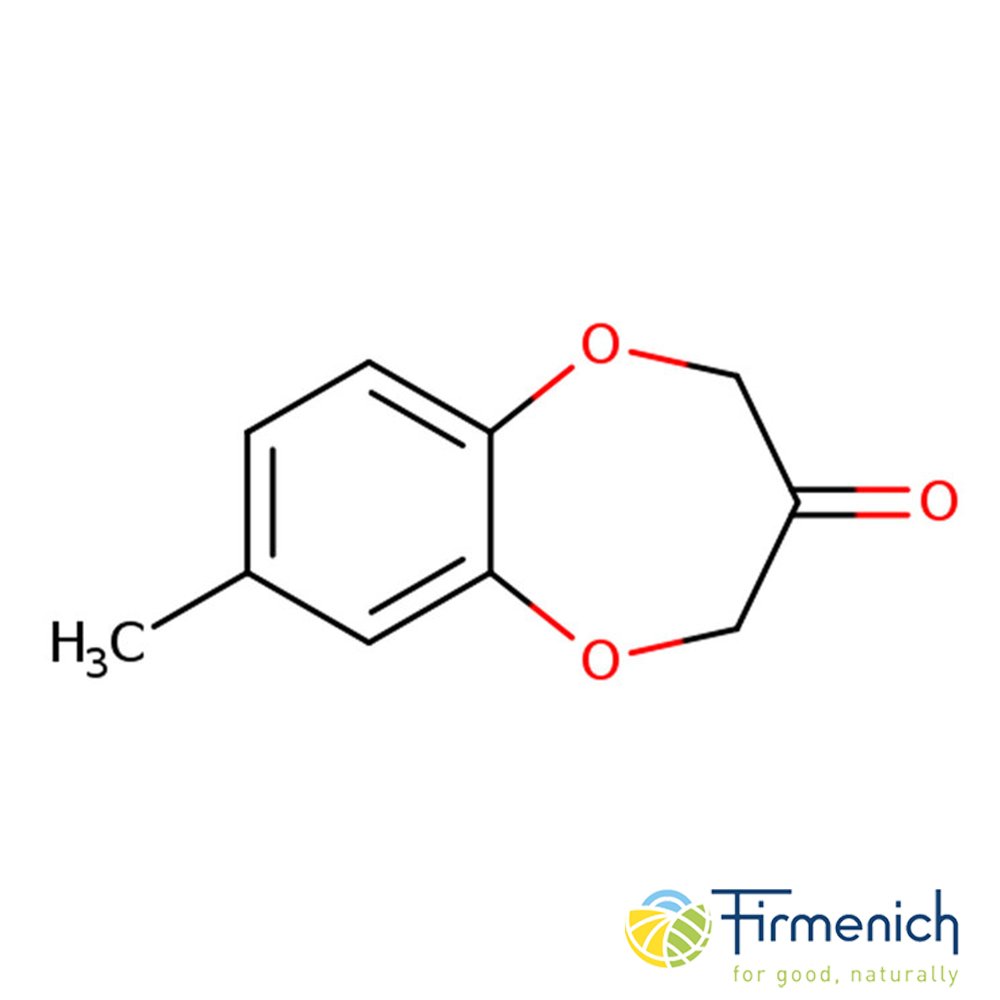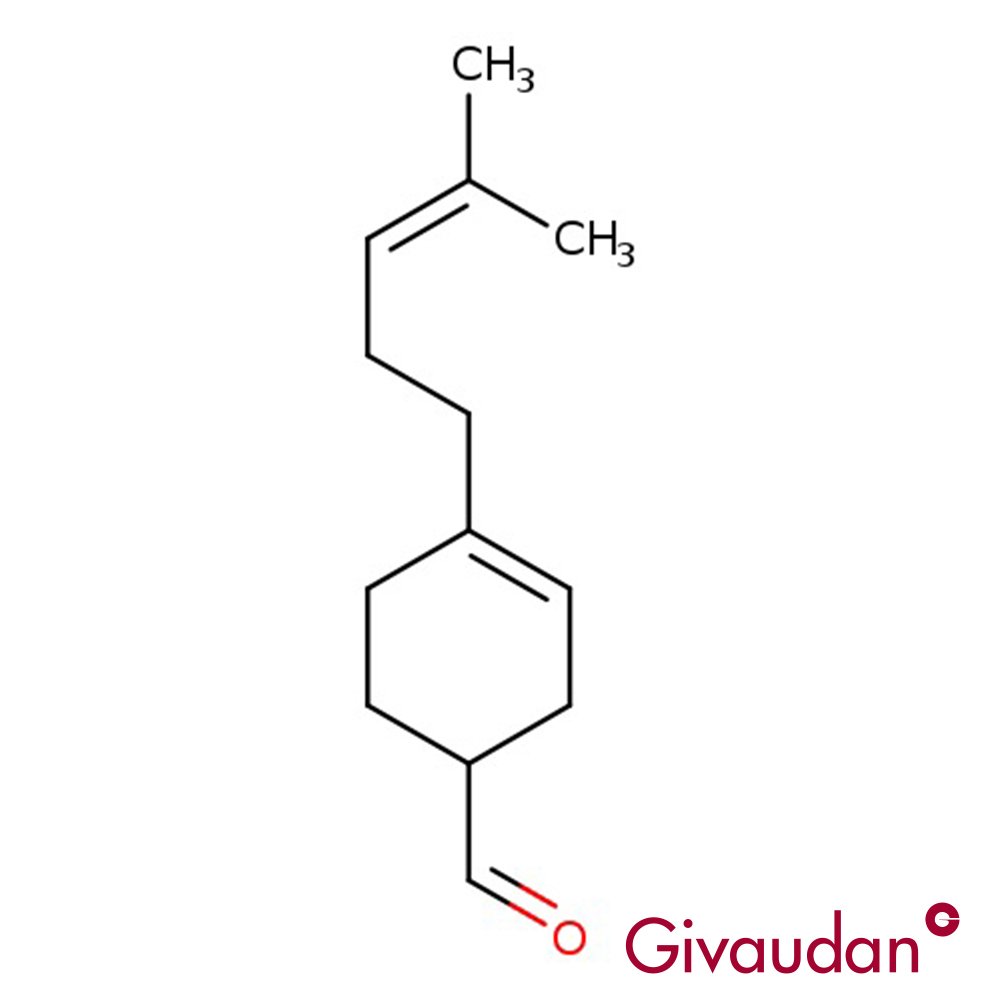Calone
Premium Synthetic Ingredient for Perfumery
Calone (CAS 28940-11-6), also known as Oceanone or watermelon ketone, is a high-impact synthetic marine aroma chemical developed by Pfizer in the 1960s. With its signature marine, ozonic, and subtly fruity profile, Calone plays a foundational role in modern aquatic perfumery. Beyond its role in sea-breeze accords, it supports floral compositions and ambergris reconstructions, contributing diffusion and freshness with remarkable persistence. Iconic in compositions like Acqua Di Gio and Hugo, Calone helped define the marine olfactory family from the 1990s onward.
Premium Synthetic Ingredient for Perfumery
Calone (CAS 28940-11-6), also known as Oceanone or watermelon ketone, is a high-impact synthetic marine aroma chemical developed by Pfizer in the 1960s. With its signature marine, ozonic, and subtly fruity profile, Calone plays a foundational role in modern aquatic perfumery. Beyond its role in sea-breeze accords, it supports floral compositions and ambergris reconstructions, contributing diffusion and freshness with remarkable persistence. Iconic in compositions like Acqua Di Gio and Hugo, Calone helped define the marine olfactory family from the 1990s onward.
Premium Synthetic Ingredient for Perfumery
Calone (CAS 28940-11-6), also known as Oceanone or watermelon ketone, is a high-impact synthetic marine aroma chemical developed by Pfizer in the 1960s. With its signature marine, ozonic, and subtly fruity profile, Calone plays a foundational role in modern aquatic perfumery. Beyond its role in sea-breeze accords, it supports floral compositions and ambergris reconstructions, contributing diffusion and freshness with remarkable persistence. Iconic in compositions like Acqua Di Gio and Hugo, Calone helped define the marine olfactory family from the 1990s onward.
Synthetic Ingredient Overview
🏭 Manufacturer: Firmenich
🔎 Chemical Name: 8-Methyl-1,5-benzodioxepin-3-one
🧪 Synonyms: Calone, Oceanone, Watermelon ketone, Calone 1951
🧬 Chemical Formula: C₁₀H₁₀O₃
📂 CAS N°: 28940-11-6
📘 FEMA: Not listed
⚖️ MW: 178.18 g/mol
📝 Odor Type: Aquatic / Marine
📈 Odor Strength: Powerful
👃🏼 Odor Profile: Intense sea breeze, ozonic, marine with a faint floral background. Slight green and fruity aspects (melon, oyster).
⚗️ Uses: Aquatic bases, ambergris reconstruction, diffusive freshness in florals
🧴 Appearance: Colorless to pale yellow liquid
What is Calone?
Calone is a synthetic ketone developed in 1966 by Pfizer chemists (J.J. Beereboom et al.) during tranquilizer research involving benzodiazepine-related structures. The compound, chemically identified as 8-methyl-1,5-benzodioxepin-3-one, was later revealed to have a potent, marine-ozonic scent with watermelon-like nuances.
Registered under the internal code “Calone 1951” (from Camilli, Albert & Laloue + ketone), it remained marginal in perfumery until the late 1980s. The shift occurred with Aramis New West for Her (1989), which used Calone at 1.2% concentration—an unprecedented move that marked the beginning of the aquatic olfactory trend.
Following the expiration of Pfizer's patent, Calone was adopted widely under various names (e.g., Ozeone, Aquamore, Calone 161), helping define the marine-aquatic family of the 1990s.
Olfactory Profile & Perfumery Applications
Calone’s profile is characterized by:
Marine freshness with a distinctly ozonic, sea-breeze top
Subtle floral background with green overtones
Faint fruitiness, commonly likened to watermelon or melon peel
Persistent, diffusive projection, even at low concentrations
This compound is widely used to create:
Marine and aquatic compositions (e.g., Acqua Di Gio, CK Escape, Hugo)
Ambergris reconstitutions (as part of the REM accord with benzyl salicylate and patchouli)
Lily-of-the-valley and oceanic floral structures
Airy diffusion effects in clean citrus or green perfumes
Usage levels: Often ≤0.8% in fine fragrance. Can dominate compositions even at low concentrations.
Industrial & Technical Uses
While predominantly used in perfumery, Calone’s diffusion and lift properties make it useful in:
Functional fragrancing (air care, softeners, soaps)
Room sprays and aquatic-themed detergents
Niche and mainstream perfumery with oceanic profiles
Its structure offers decent formulation stability and is soluble in ethanol and organic solvents.
Regulatory & Safety Overview
IFRA 51st Amendment: No prohibitions; must follow general safety guidelines
EU Allergens: Not a declarable allergen
ECHA Classification: Not classified as hazardous
Toxicology: Not sensitizing at standard concentrations; must be used with olfactory balance due to overpowering nature
Environmental Fate: Considered biodegradable; minimal aquatic toxicity when used correctly
Additional Information
Discovery context: Identified during benzodiazepine synthesis efforts
Historical application: Initially used in lily-of-the-valley traces
Saturation period: After its rise in the 1990s, it led to widespread reformulations due to public overexposure
Modern strategy: Often dosed sparingly or used as part of ozonic-ambergris hybrid bases
Related Scentspiracy Ingredients
Ambrox Super: Used with Calone in modern ambergris simulations
Benzyl Salicylate: Primary fixative partner in REM accord
Habanolide: To support clean-musky marine profiles
Galaxolide: Often blended to soften Calone’s sharp ozone tone
Sources
National Center for Biotechnology Information (PubChem, CID 120101)
C.M. Plummer et al., Eur. J. Org. Chem., 2015
Matvey Yudov – Calone: The Air of the 1990s, Fragrantica
Scentspiracy Internal Archive – Fulvio Ciccolo (2024)


